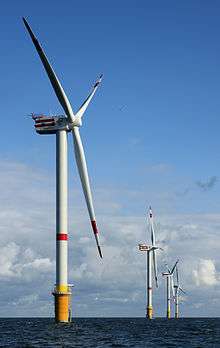Waste treatment technologies
There a number of different waste treatment technologies for the disposal, recycling, storage, or energy recovery from different waste types. Each type has its own associated methods of waste management.
Landfill
Municipal solid waste consists mainly of household and commercial waste which is disposed of by or on behalf of a local authority. Landfills waste are categorized by either being hazardous, non-hazardous or inert waste. In order for a landfill design to be considered it must abide by the following requirements: final landforms profile, site capacity, settlement, waste density, materials requirements and drainage.
Incineration
The advantages of the incineration are reduction of volume and mass by burning, reduction to a percentage of sterile ash, source of energy, increase of income by selling bottom ash, and is also environmentally acceptable.
The disadvantages of incineration are the following:[1]
- higher cost and longer payback period due to high capital investment
- since incineration is design on the basis of a certain calorific value removing paper and plastics for recycling lowers the overall calorific value that may affect the incinerator performance[1]
- the process still produces a solid waste residue at the end which still requires treatment and management[1]
Emissions from incinerators consist of particulates, heavy metals, pollutant gases, odor dust and litter. Due to incomplete combustion, products such as dioxins and furans are formed.
Bioremediation
The human sewage and the process waste from the manufacturing industries are the two major sources of the waste water. In Thailand, the total volume of the wastewater from industries is much greater than that of the domestic sewage.[2] As a result, an effective method is needed. Microbial remediation of xenobiotics has shown to be effective and the low cost technology, but it still has several limitations. Consequently, the genetic engineering approaches are used to create the new strain of microbes (Genetically engineered microorganisms, GEMS) which have better catabolic potential than the wild type species for bioremediation.[3] There are four major approaches to GEM development for the bioremediation application which include the modification of enzyme specificity and affinity, pathway construction and regulation, bioprocess development, monitoring and control and lastly, bio-affinity bio-receptor sensor application for chemical sensing, toxicity reduction and end point analysis.[4] These allow the extensive use of genetically engineered microorganism.[5] In the far future, the genetically engineered microorganisms could possibly be used to control the green house gases, convert the waste to the value-added product as well as to reduce and capture the carbon dioxide gases from the atmosphere (carbon sequestration),[6] but lots of research still need to be done in order to make these potential become true.[7] There is a concern regarding the use of genetically engineered microbes for the remediation of pollutants. Once the genetically microorganisms has been added, it may disperse uncontrollably and hard to be removed.[8] However, the serious major concern that leads to the limitation of GEMs development seem to be the lack of information on gene as well as the regulatory constraints.
References
- 1 2 3 Williams, Paul (2005). Waste Treatment and Disposal. Chichester, UK: John Wiley & Sons Ltd. ISBN 978-0-470-84912-5.
- ↑ Chokewinyoo, Pariyada; Khanayai, Pornsiri. "Wastewater Production, Treatment, and Use in Thailand" (PDF). 5th Regional Workshop on Safe Use of Wastewater in Agriculture Bali, Indonesia. Retrieved 23 November 2014.
- ↑ Wrobleski, Christopher M. "Bioremediation and Genetic Modification". Department of Biological Sciences, Davidson College. Retrieved 23 November 2014.
- ↑ EASTER, JAMES; SAYLER, GARY. "21 Genetically Engineered Microorganisms and Bioremediation" (PDF). Retrieved 23 November 2014.
- ↑ Das, Nilanjana; Chandran, Preethy. "Microbial Degradation of Petroleum Hydrocarbon Contaminants: An Overview". Biotechnology Research International. 2011: 13. Retrieved 23 November 2014.
- ↑ "What Is CO2 Sequestration?". Plain CO2 Reduction Partnership. Retrieved 23 November 2014.
- ↑ Sayler, Gary; Ripp, Steven. "Field applications of genetically engineered microorganisms for bioremediation processes". Center for Environmental Biotechnology, University of Tennessee. Retrieved 23 November 2014.
- ↑ Papinazath, Taniya; Sasikumar, C.Sheela. "ENVIRONMENTAL MANAGEMENT:- BIOREMEDIATION OF POLLUTED ENVIRONMENT" (PDF). Proceedings of the Third International Conference on Environment and Health, Chennai, India. Retrieved 23 November 2014.
See also
- List of solid waste treatment technologies
- List of waste water treatment technologies
- List of nuclear waste treatment technologies
- Waste-to-energy

